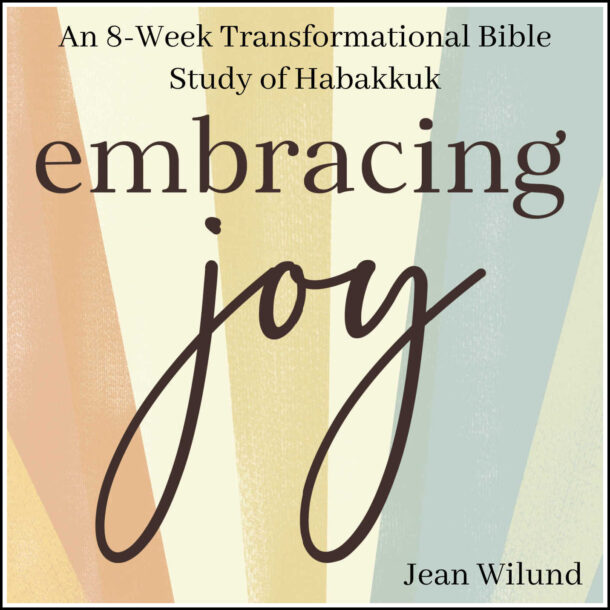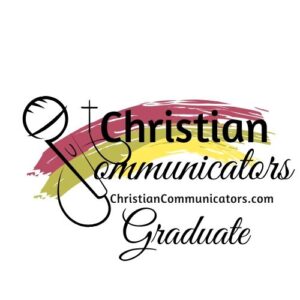
Reading through the whole Bible is the best daily habit we can develop — along with eating and sleeping. We need all three every day.
Why is it so important to read the whole Bible? Because we’ll never truly know the God of the Word apart from the Word of God — the whole Word of God.
Sadly, most Christians have never read the whole Bible. Many of us look at this thick, ancient book and give up before we even start.
Many assume the Old Testament is no longer relevant. The great news is that the Old Testament will forever be relevant — as is all of God’s Word.
Never give up. Start and finish. You’ll be forever grateful.
But why do I think you need a reading plan?
Those who fail to plan, plan to fail. How many times have you heard this? It’s old, but faithful truth. The worst Bible reading plan is no plan. We can determine we’ll read the whole Bible, but it’s easy to get lost in what you’ve already read and to lose motivation if you’re not even sure how to start much less finish.
Bible reading plans make reading the whole Bible easier, and that’s why I’m offering you some of the best Bible reading plans.
[If you’re brand new to the Bible, you may be interested in my book designed specifically with you in mind: Ease into the Bible: How to Wade into the Water of God’s Word with Confidence.]
READING PLANS FOR THOSE BRAND NEW TO THE BIBLE
1. Just Getting Started Plan: The Gospel of Mark
If you’re brand new to the Bible, I recommend reading through one of the four Gospels first, such as the Gospel of Mark.
Mark is fast-paced, written for those who aren’t familiar with Jewish history or traditions, and it’s shorter than the other gospels.
All four gospel accounts record the life and works of Jesus Christ and the good news of salvation through His death on the cross and His resurrection.
Reading a gospel account is vital to our truly understanding our salvation as we witness Christ teach and perform miracles that proved His divine identity and then accomplish our redemption from sin.
Every book in the Bible either looks forward or backward to the gospel and the cross—with a view toward Christ’s eternal kingdom and our co-reign with Him.
Once you’ve read Mark or another of the gospel, it’s time to dive into more books using a fuller Bible reading plan.
Below, I share two starter lists and three whole Bible reading lists.
2. Dr. R.C. Sproul’s Starter List for Reading the Bible
Once you’ve read the Gospel of Mark, you may want to start with either Dr. R. C. Sproul’s starter list for an overview of the Bible or the next reading plan below.
This plan includes only 16 books of the Old Testament and 8 books of the New Testament.
3. Redemptive-Historical Overview Bible Reading Plan
Much like the starter list from RC Sproul, Greg Lanier’s plan will give you an important overview of the Bible, specifically an overview of the history and future of God redeeming us from our sin through Jesus Christ.
- Redemptive-Historical Overview Bible Reading Plan (© Greg Lanier)
Rather than read through entire books, Lanier has put together a list of chapters from the Old and New Testament that cover the following topics:
1. Creation
2. Fall, Original Sin, and Judgment
3. God’s Covenant Promise to Abraham
4. Promise Continued through the Patriarchs
5. Exodus from Egypt
6. God’s Covenant Law Given through Moses
7. Rebellion in the Wilderness
8. Conquest of the Land and Early Leadership
9. Establishing the Monarchy
10. Religious Life of the Nation
11. Degradation of the Monarchy
12. Israel and Judah in Exile
13. Grief and Consolation during Exile
14. (Partial) Restoration from Exile
15. Anticipating an Eschatological Deliverer
16. Anticipating the Day of the Lord
“Annual Bible reading plans are great. But there are tradeoffs. They can be oppressive for some, and they require a heavy load of reading spread equally across all chapters and books with little time to reflect, pause, connect dots, etc. One may not, at the end of reading the Bible through in a year, emerge with a much better understanding of the 1,189 chapters you just read. The plan provided below takes a different approach meant to complement (not replace) the normal one. It curates the key chapters of the OT that help frame the flow of redemptive history (how God has worked in history to bring about his plan of salvation). Most sections of OT readings include NT chapters that shed light on fulfillment in Christ. You can go at your own pace and pause however often you want to dig deeper and reflect on what you are reading. At the end, you will have a solid grounding in the entire message of the Bible, which can then help you revisit those 1,189 chapters afresh.”
WHOLE BIBLE READING PLANS
Once you’ve gotten an overview of the Bible, I encourage you to dive into a whole Bible reading plan.
We need all of God’s Word to gain as full of an understanding as we can of who God is, who we are, and what it looks like to live as disciples of Christ and true children of God.
The following plans do a tremendous job of connecting the whole Bible together.
When I first read through the whole Bible, I read through the Bible in order from Genesis to Revelation. I don’t recommend this plan. It took too long to get to the New Testament and too long to get back to the Old Testament. Plus, it didn’t help me connect all the books to each other.
The Bible was not written in chronological order. It starts out in order, but it eventually veers off. The Bible is actually organized according to the main genre of the books. This is why I highly recommend a plan that has you reading in both the Old and New Testament each day.
Should we read the Bible in a Year?
Please note that each of the following plans are designed to read the Bible in a year. I don’t recommend making this your goal.
Why? Because it’s too easy to lose sight of the true purpose of reading the Bible.
Our goal shouldn’t be to conquer the Bible in a year. It should be to check it off our To Do list.
Our purpose should be for God to transform us by every word as we come to know the Father, Son, and Holy Spirit better.
Take all the time you need to read the whole Bible. Read as much of each day’s reading as you can, then pick up where you left off the next day. Faithfulness is better than speed.
Never give up. But if you do, pick back up where you started and keep going.
1. Robert Murray M’Cheyne Whole Bible Reading Plan
Robert M’Cheyne (pronounced Mak-shayn) was the pastor of St Peter’s Church in Dundee, Scotland from 1836 to 1843. He was only 30 years old when he died, but his life left a tremendous impact on generations. His Bible reading plan is one of my favorites. (Learn more about the life of Robert M’Cheyne here.)
With this plan, you’ll read the Old Testament once and the New Testament and Psalms twice. Each day includes passages from both the Old and the New Testaments.
2. The Five-Day Bible Whole Reading Plan
I discovered this great plan years ago and have used it many times.
Each day includes passages from both the Old and the New Testaments, which is always my preferred method for reading through the whole Bible.
Read my article Five Reasons Why I Love the Five-Day Bible Reading Plan.
3. 52 Weeks through the Bible: A Year-Long Bible Study for Men and Women
Normally, I’d encourage you to simply read the Bible and only turn to a resource when you truly can’t figure out what the passage means because we don’t want to become resource dependent. We want to let the Holy Spirit be our main teacher (John 14:26, 1 Corinthians 2:13–14). Therefore, I hesitated to share this resource with you.
However, I’m so excited about this 52-week Bible study and all that it offers that I’m sharing it now. Learn from Dr. MacArthur how to study and interpret the Bible.
You can buy this book on Amazon here.
Description quoted from Amazon:
Journey through the Bible in a year. Discover what it says. Apply it to your life in a deeper way than ever before.
Have you ever started reading the Bible only to get lost, lose steam, become distracted? Do you want to develop a habit of faithfully reading God’s Word, but the task seems too daunting?
Based on more than fifty-five years of teachings from bestselling author and pastor John MacArthur, this year-long pilgrimage through Scripture includes:
- A daily plan to help keep you on track to read through the Bible in one year.
- Devotional readings based on John MacArthur’s teachings on key portions of Scripture.
- Reflections and questions to help you apply the message to your life.
- Weekly study questions to test your knowledge on what you’ve read.
- Maps and charts to help you grasp the material in visual form.
Every phrase, every verse, every chapter, and every book in the Bible comes from God Himself! It is the only way that we can know God and know His will for our lives. Because of this, we should develop a habit of reading God’s Word every day to grow in faith and righteousness and to deepen our relationship with Jesus.
So take it a day at a time. Give yourself grace, but take your faith seriously. 52 Weeks through the Bible serves as your guide—providing context, helping you form a routine, and deepening your knowledge.
CHRONOLOGICAL BIBLE READING PLANS
Once you’ve read through the whole Bible at least once, you may want to read the Bible in chronological order.
I recommend either:
- Purchase a chronological Bible such as the CSB Day-by- Day Chronological Bible
- Print a free chronological reading plan such as BlueLetterBible.org’s free online plan.
Whichever plan you choose, read the Bible to know who God is and to understand the salvation Christ purchased for us on the cross.
We all need to get plenty of sleep and to eat well, but most importantly, we need to read the Bible every day. It’s the greatest habit we can form and cherish.
When the Bible gets into us and conquers our hearts, we’ll never be the same.
It will be glorious!






